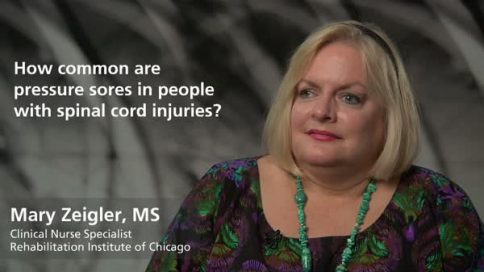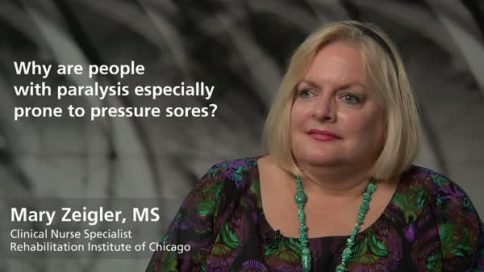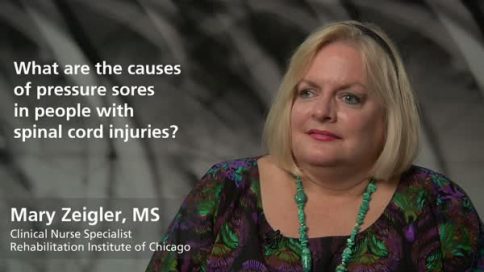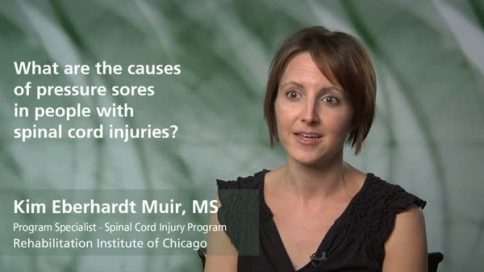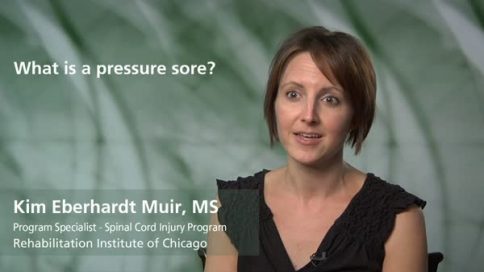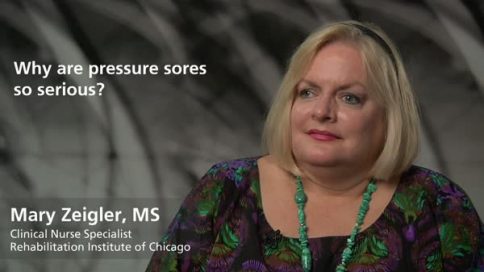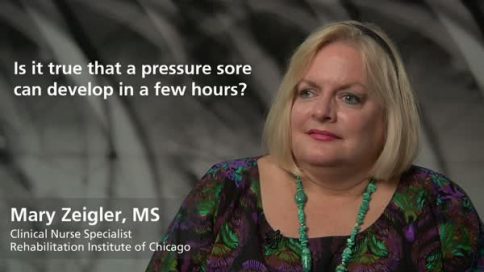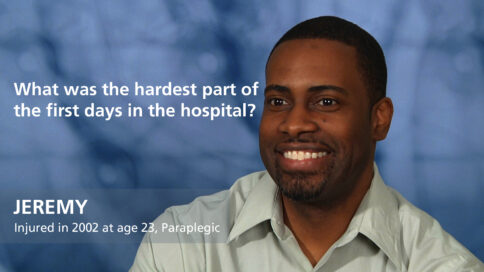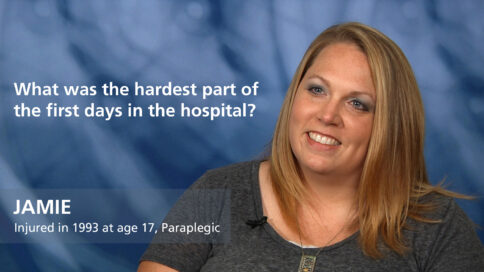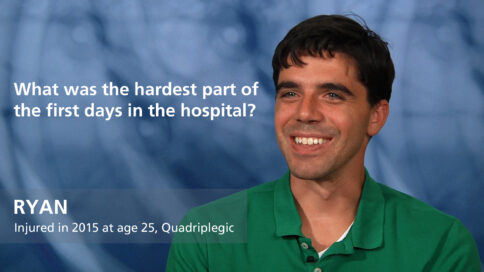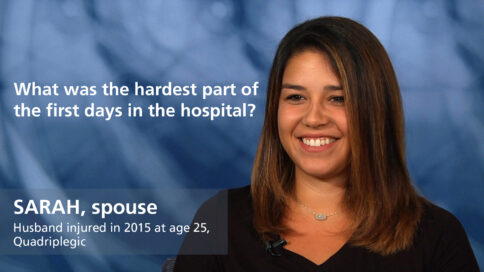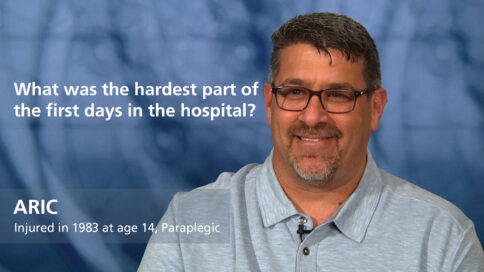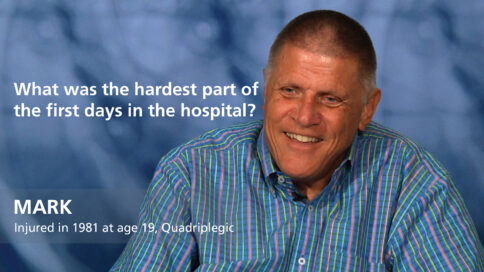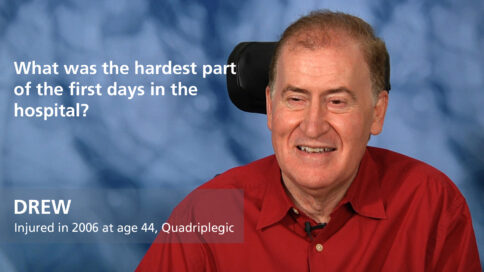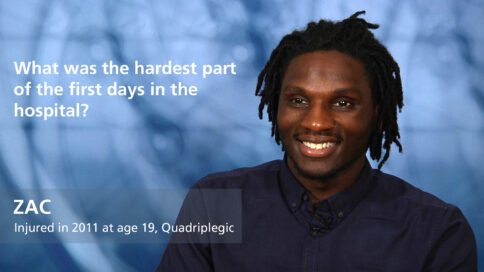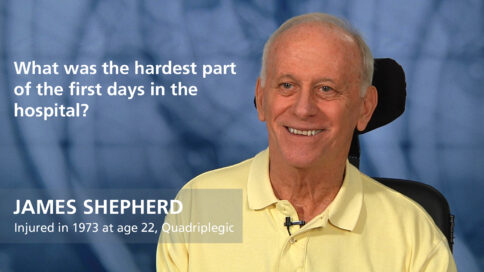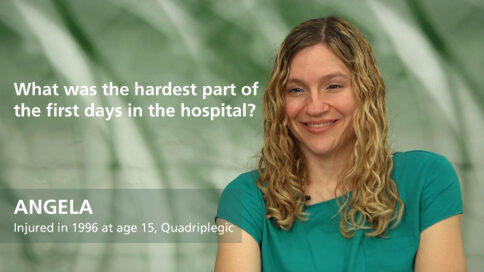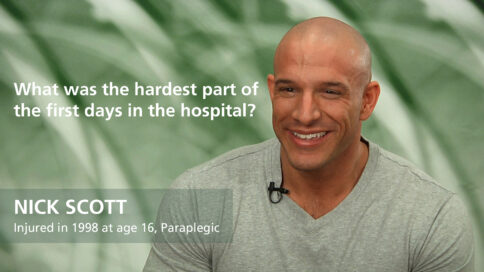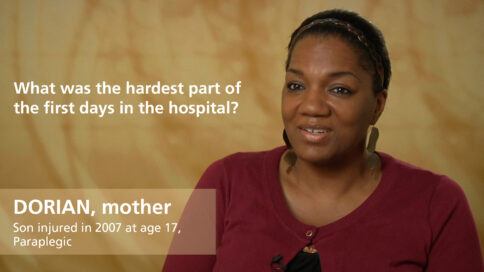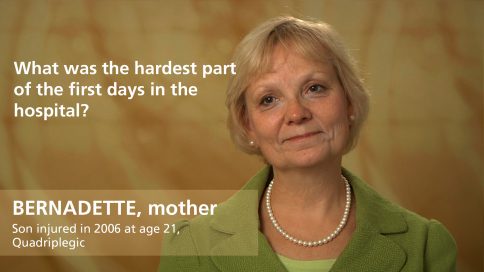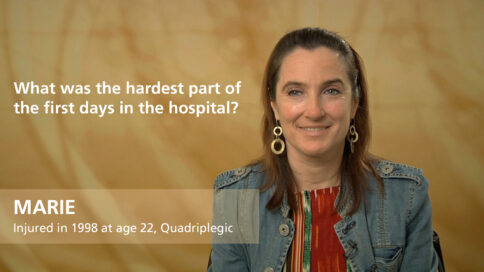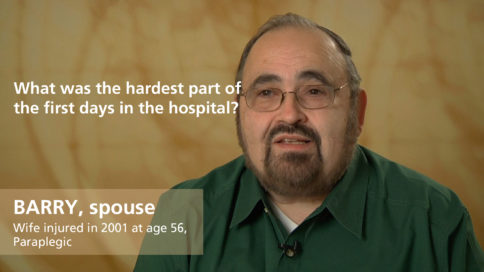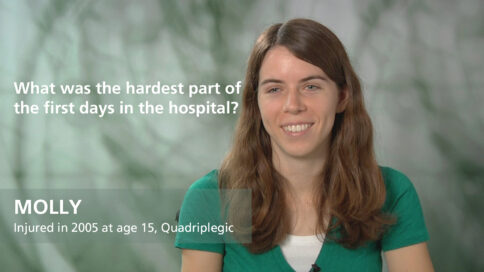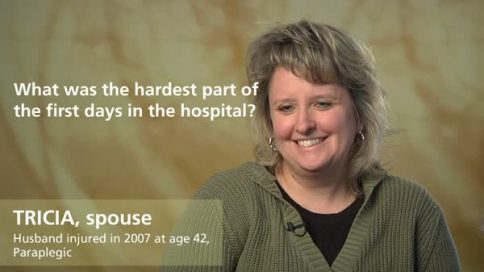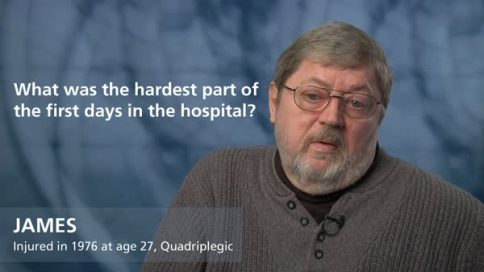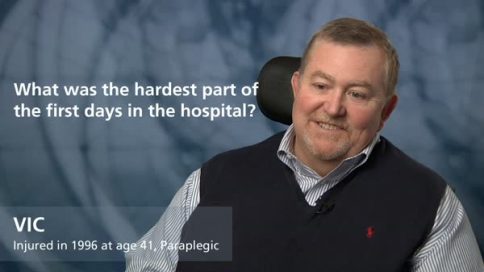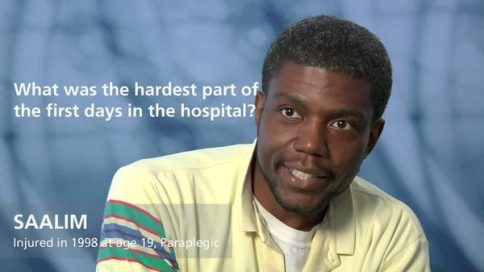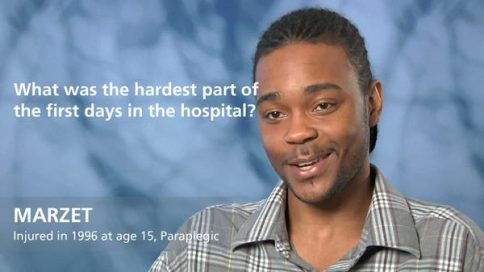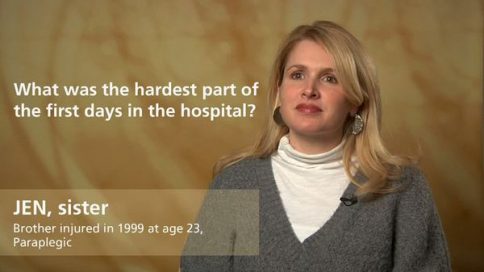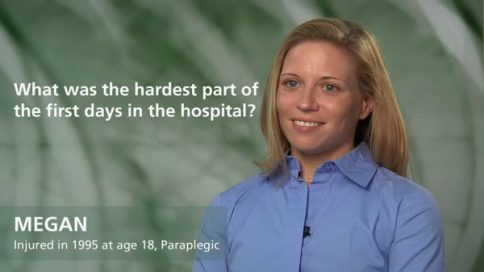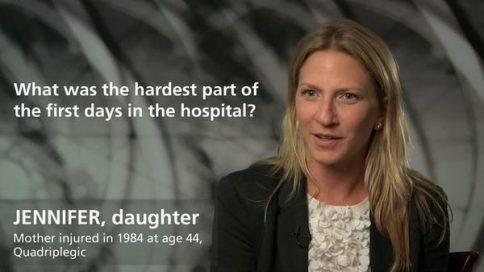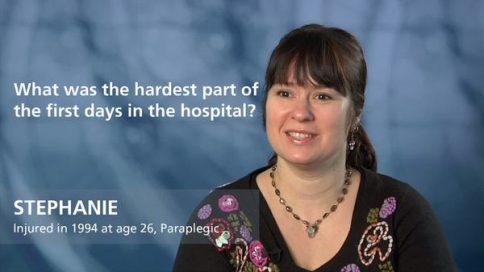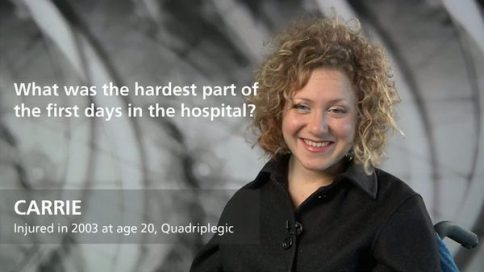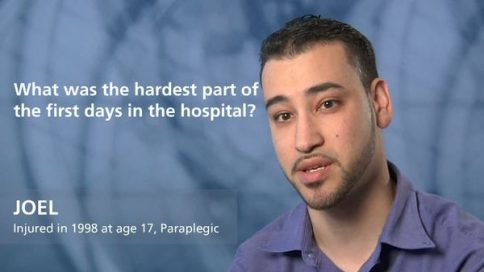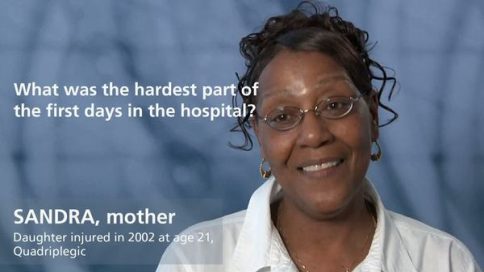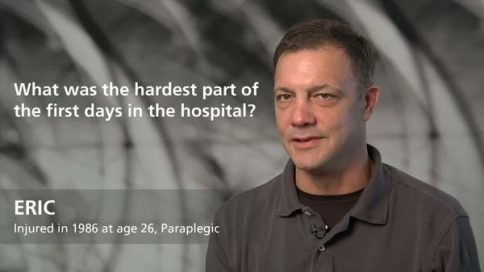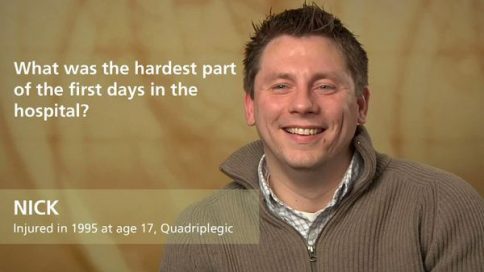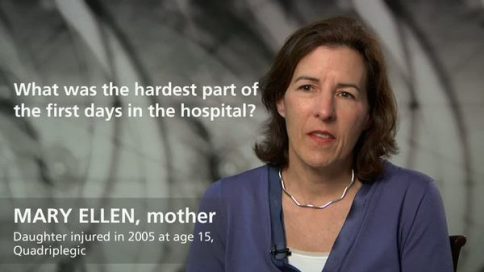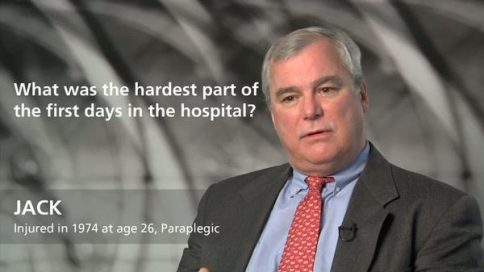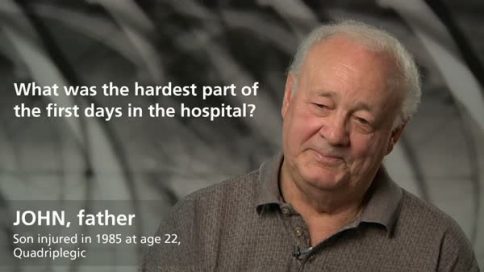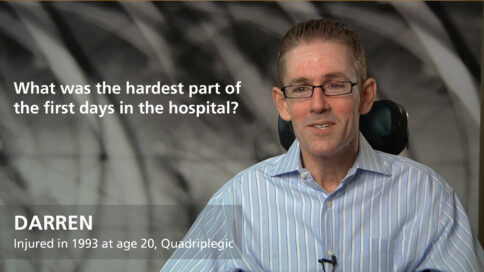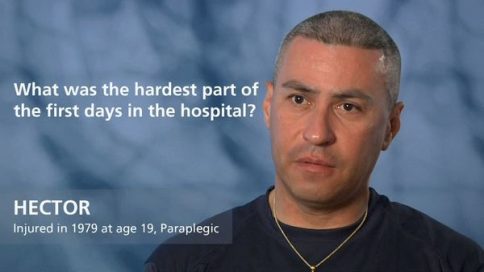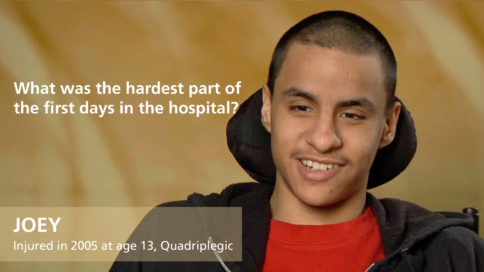What parts of the body are most likely to develop pressure sores? - Mary Zeigler, MS
|
|
What parts of the body are most likely to develop pressure sores? |
|
Mary Zeigler, MSClinical Nurse Specialist, Rehabilitation Institute of Chicago |
||
| Read Bio | More Videos by Mary Zeigler | |
|
Share |
||
Transcript
When you’re sitting, you sit on two bones; in the center part of each buttock, and little bit lower are called the ischial tuberosity, sometimes we refer to these as “cheekbones,” but not facial cheekbones. We sit directly on these two bones when we’re sitting with erect posture. When we’re laying down flat in bed, we’re not putting any pressure on these two Ischial tuberosities; we’re putting all of our pressure on an area where the gluteal crease is located. So, in the center, in between your buttocks, that area is what receives the pressure when we lay down. So if a patient has a sore on that part of their body, which is called the sacrum, in the center in between the buttocks, they cannot lay on their back in bed. But they can sit for a limited amount of time in a wheelchair, because the pressure is going to a different area, the two ischial tuberosities. Any bony prominence, such as the hip bone, the heel, the ankle, the knee, the side of the knee, the shoulder blade, the back of the head. However a pressure ulcer can develop anywhere on the body. For example, underneath a cast, underneath a brace, some of the braces for spinal stabilization are a chin piece, so you may have some rubbing, or what we call friction, and a little pressure under the chin, so you may develop a pressure sore in that area.
Show Less|
|
||
add
What parts of the body are most likely to develop pressure sores? |
||
Mary Zeigler, MSClinical Nurse Specialist, Rehabilitation Institute of Chicago |
More Videos by Mary Zeigler | |
| Transcriptadd | share | |
When you’re sitting, you sit on two bones; in the center part of each buttock, and little bit lower are called the ischial tuberosity, sometimes we refer to these as “cheekbones,” but not facial cheekbones. We sit directly on these two bones when we’re sitting with erect posture. When we’re laying down flat in bed, we’re not putting any pressure on these two Ischial tuberosities; we’re putting all of our pressure on an area where the gluteal crease is located. So, in the center, in between your buttocks, that area is what receives the pressure when we lay down. So if a patient has a sore on that part of their body, which is called the sacrum, in the center in between the buttocks, they cannot lay on their back in bed. But they can sit for a limited amount of time in a wheelchair, because the pressure is going to a different area, the two ischial tuberosities. Any bony prominence, such as the hip bone, the heel, the ankle, the knee, the side of the knee, the shoulder blade, the back of the head. However a pressure ulcer can develop anywhere on the body. For example, underneath a cast, underneath a brace, some of the braces for spinal stabilization are a chin piece, so you may have some rubbing, or what we call friction, and a little pressure under the chin, so you may develop a pressure sore in that area.
